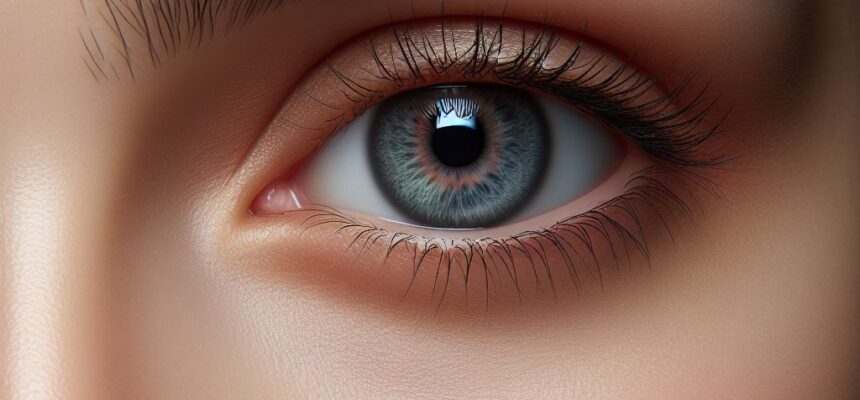Autonomic Nervous System (ANS), its impairment syndromes, examination methods, orthostatic intolerance, and Horner syndrome:
Autonomic Nervous System: Anatomy and Physiology
The ANS is a component of the peripheral nervous system that regulates involuntary body functions, including heart rate, digestion, respiratory rate, pupillary response, urination, and sexual arousal. It is divided into the sympathetic and parasympathetic nervous systems. The sympathetic system is often associated with the “fight or flight” response, while the parasympathetic system is associated with “rest and digest” activities.
Impairment Syndromes
Impairments in the ANS can lead to various syndromes, such as:
- Autonomic neuropathy: This involves damage to the autonomic nerves and can be caused by diabetes mellitus and other conditions.
- Dysautonomias: These are conditions that cause the ANS to malfunction, leading to issues like orthostatic hypotension and postural orthostatic tachycardia syndrome (POTS).
Examination Methods
Examination of the ANS typically includes assessing for:
- Postural hypotension: A significant drop in blood pressure upon standing.
- Heart rate changes: In response to the Valsalva maneuver or other stimuli.
- Sweating: Decreased or absent sweating can indicate ANS dysfunction.
- Horner syndrome: Characterized by unilateral ptosis (drooping eyelid), pupillary constriction, and facial anhidrosis.
Orthostatic Intolerance
Orthostatic intolerance (OI) is a condition where an individual develops symptoms upon standing that are relieved when lying down. Symptoms can include dizziness, fainting, and blurred vision. OI can be a feature of various conditions, including POTS and chronic fatigue syndrome.
Horner Syndrome
Horner syndrome results from a disruption of the sympathetic nerves supplying the eye and is characterized by ptosis, miosis (constricted pupil), and anhidrosis on the affected side of the face. It can be caused by various conditions, including stroke, tumors, or trauma.
==========
Horner Syndrome in more details:
Horner syndrome, also known as oculosympathetic palsy или Bernard-Horner syndrome, is a relatively rare neurological condition that affects the eye and the surrounding tissues on one side of the face. Let’s explore the role of the autonomic nervous system (ANS) in Horner syndrome:
1. Cause of Horner Syndrome:
– Horner syndrome results from damage to a specific pathway in the **sympathetic nervous system**. The sympathetic system plays a crucial role in regulating various involuntary functions, especially during stressful situations (such as the “fight-or-flight” response). These functions include heart rate, pupil size, perspiration, blood pressure, and more.
2. Symptoms of Horner Syndrome:
– Horner syndrome affects one side of the face and typically presents with the following symptoms:
– Ptosis: Drooping of the upper eyelid.
– Miosis: Constriction of the pupil.
– Anhidrosis: Decreased sweating.
– Hyperemia: Increased blood flow to the affected side.
3. Pathway Disruption:
– The sympathetic nerves connecting the brainstem to the eye are disrupted in Horner syndrome. This disruption can occur due to various lesions, either centrally (within the brain) or peripherally (along the nerve pathway).
– Lesions may be:
– Central: Brain stem ischemia, syringomyelia, or brain tumors.
– Peripheral: Pancoast tumor, cervical adenopathy, neck and skull injuries, aortic or carotid dissection, or thoracic aortic aneurysm.
4. Diagnosis:
– Clinicians use several methods to diagnose Horner syndrome:
– Cocaine or Apraclonidine Eye Drop Test: These drops help confirm and characterize the syndrome.
– Cocaine blocks norepinephrine reuptake, causing dilation of the unaffected eye’s pupil. If the affected eye’s pupil does not dilate (postganglionic lesion), it indicates peripheral Horner syndrome.
– If the lesion is above the superior cervical ganglion (preganglionic or central Horner syndrome), both pupils dilate.
In summary, the ANS, specifically the sympathetic division, plays a critical role in Horner syndrome by regulating the affected eye’s pupil size, sweating, and blood flow.
Reference:
(1) Autonomic nervous system: anatomy, physiology, and relevance in …. https://academic.oup.com/bjaed/article/16/11/381/2445840.
(2) Autonomic nervous system: Anatomy, divisions, function | Kenhub. https://www.kenhub.com/en/library/anatomy/autonomic-nervous-system.
(3) Autonomic Medicine for Students – research.ninds.nih.gov. https://research.ninds.nih.gov/sites/default/files/documents/Autonomic%20Medicine…for%20Students%20dg%202-15-2024-R.pdf.
(4) Summary – Autonomic Nervous System (ANS) – Pharmacy 180. https://www.pharmacy180.com/article/summary-3583/.
(5) How to Assess the Autonomic Nervous System – MSD Manuals. https://www.msdmanuals.com/professional/neurologic-disorders/neurologic-examination/how-to-assess-the-autonomic-nervous-system.
(6) Autonomic Nervous System | Sympathetic – Geeky Medics. https://geekymedics.com/autonomic-nervous-system/.
(7) Orthostatic Intolerance and Low Blood Pressure – Verywell Health. https://www.verywellhealth.com/orthostatic-intolerance-715915.
(8) Orthostatic Intolerance – Bateman Horne Center. https://batemanhornecenter.org/wp-content/uploads/2023/09/Orthostatic-Intolerance-Education-Handout.pdf.
(9) Horner’s Syndrome | Geeky Medics. https://geekymedics.com/horners-syndrome/.
(10) Horner Syndrome | Concise Medical Knowledge – Lecturio. https://www.lecturio.com/concepts/horner-syndrome/.
(11) Autonomic Nervous System | The Neurologic Examination: Scientific Basis …. https://academic.oup.com/book/24480/chapter/187575787.
(12) How to Assess the Autonomic Nervous System – The Merck Manuals. https://www.merckmanuals.com/en-pr/professional/neurologic-disorders/neurologic-examination/how-to-assess-the-autonomic-nervous-system.
(13) Autonomic nervous system (video) | Khan Academy. https://www.khanacademy.org/science/health-and-medicine/nervous-system-and-sensory-infor/x6e556f83:structure-and-function-of-the-nervous-system/v/autonomic-nervous-system.
(14) Autonomic Nervous System: Basic and Clinical Aspects – Springer. https://link.springer.com/book/10.1007/978-3-319-57571-1.
(15) Autonomic Nervous System: Anatomy | Concise Medical Knowledge – Lecturio. https://www.lecturio.com/concepts/autonomic-nervous-system/.
(16) Horner Syndrome – Brain, Spinal Cord, and Nerve Disorders – MSD Manuals. https://www.msdmanuals.com/en-sg/home/brain,-spinal-cord,-and-nerve-disorders/autonomic-nervous-system-disorders/horner-syndrome.
(17) Horner syndrome: Video, Anatomy, Definition & Function | Osmosis. https://www.osmosis.org/learn/Horner_syndrome.
(18) AUTONOMIC NERVOUS SYSTEM (ANS) – JU Medicine. https://doctor2020.jumedicine.com/wp-content/uploads/sites/12/2021/02/ANS-Lecture-Notes.pdf.
(19) The Stanford Autonomic Disorders Program | Neurology & Neurological …. https://med.stanford.edu/neurology/divisions/autonomic.html.
(20) Overview of the Autonomic Nervous System – MSD Manuals. https://www.msdmanuals.com/en-gb/professional/neurologic-disorders/autonomic-nervous-system/overview-of-the-autonomic-nervous-system.
(21) Orthostatic intolerance – The ME Association. https://meassociation.org.uk/nice-guidelines/items/orthostatic-intolerance/.
(22) Mechanisms, causes, and evaluation of orthostatic hypotension. https://www.uptodate.com/contents/mechanisms-causes-and-evaluation-of-orthostatic-hypotension.
(23) undefined. https://doi.org/10.1093/bjaed/mkw011.
(24) undefined. https://research.ninds.nih.gov/staff-directory/david-s-goldstein-md-phd%29.
(25) Getty Images. https://www.gettyimages.com/detail/illustration/sympathetic-and-parasympathetic-nervous-royalty-free-illustration/1143318479.
Одобрено отDr. Petya Stefanova
